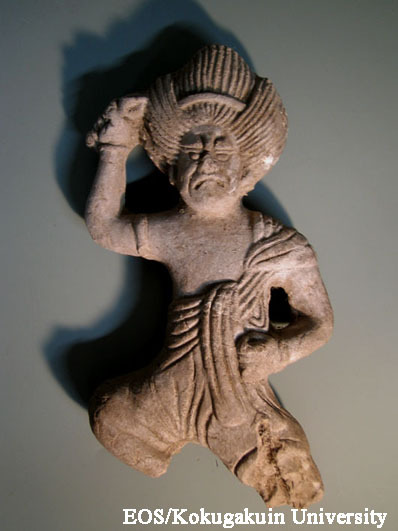- トップ
- Encyclopedia of Shinto
- Zaō Gongen
Encyclopedia of Shinto
| Main Menu: | |
| Links: |
詳細表示 (Complete Article)
| カテゴリー1: | 2. Kami (Deities) |
|---|---|
| カテゴリー2: | Combinatory Kami |
| Title | Zaō Gongen |
| Text | The "Avatar Zaō," also known as Kongō Zaō Bosatsu ("Bodhisattva Zaō of the Diamond Realm"), a deity unique to Japan's Shugendō sect. Originally a tutelary of Buddhism, Shūkongōshin (Skt. Vajrapani) evolved successively into the Bodhisattva Kongō Zaō and the avatar Zaō-Gongen. Originating at the Yamato-area mountain Kinpusen, the Zaō cult was transmitted to Kumano in the eleventh and twelfth centuries, and from there spread throughout Japan. From the late medieval period, however, the deity Fudō Myōō tended to eclipse Zaō in popularity as a central object of worship. The legend that En no Ozunu was inspired by Zaō Gongen originated in the Kamakura period. According to the legend, En no Ozunu was engaging in meditative mountain practice with the purpose of receiving a tutelary deity when Zaō appeared, together with Shakyamuni, the thousand-armed Avalokitesvara (Jp. Kannon) and the Boddhisattva Maitreya (Jp. Miroku). All these buddhas and deities appeared as tutelaries to help En no Ozunu overcome demons and evil thoughts. Another version relates that Zaō appeared in the form of a mandala, sitting on a Jeweled Stone in the lake Seiryū at the peak of Mt. Kinpu. Another states that while En was meditating at Mt. Yūjutsu, the deity Benzaiten appeared on the seventh day, becoming known as the Tenkawa Benzaiten; on the fourteenth day a Jizō Bodhisattva appeared, and this became known as the Shōgun Jizō of Kawakami. Finally, on the twenty-first day Zaō appeared as the fierce deity kōjin, incorporating the identities of the three buddhas Dainichi, Shakyamuni, and Amida. Zaō is commonly depicted as blue-black in color, displaying a scowling disposition on his three-eyed face and wearing a three-pointed crown. His left hand forms the "sword" mudra and rests on the hip, while the right hand hold up a three-pointed vajra (ritual scepter). The left foot rests on a rock while the right foot is raised into the air. -Kadoya Atsushi |




